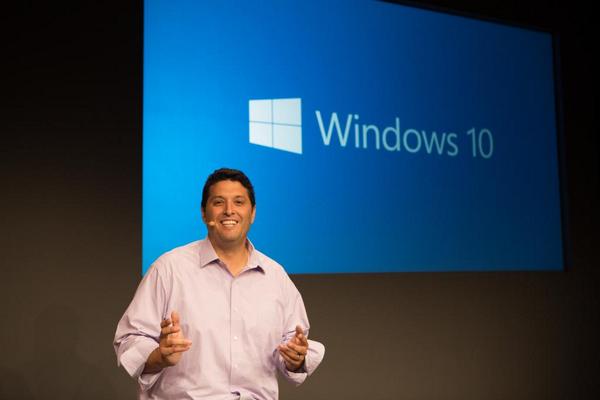Windows 10: here is five things you can't do if you don't upgrade.
Microsoft Windows 10 will bring quite a number of innovations, some of which, will slowly change the way users interact with their Windows PC. In anticipation of the official release of Windows 10, laptop manufacturers have already geared up for mass upgrades to the new operating system, by adding functionalities that are unique to Windows 10, and that integrate with the hardware of their machines, and that are likely to get users into new habits.

We’ll talk to our PCs
Microsoft’s voice activated virtual assistant Cortana is able to carry on many tasks, and reach applications and content, directly, simply by speaking to it, or typing into the Cortana search bar. By comparison, actions for which users have developed muscle-memory, like trying to find an application by going through the taskbar menu, or scanning through a mixed clutter of desktop icons, or trying to remember the location of a bookmarked URL, will slowly but surely become a thing of the past. Laptop manufacturers have already begun rolling out devices fitted with a special Cortana key, which is designed to replicate the default Win+C shortcut, which brings up Cortana voice recognition.
It might seem silly now, but there is no fundamental difference between using voice to ask for directions to a smartphone docked into a car’s dashboard, and issuing voice commands to a laptop, in order to switch from one application to another, or to search for information of a topic on the Web. Voice commands are becoming a big deal for consumers, especially with the rising popularity of wearable devices like smartwatches, that further encourage users to take advantage of virtual assistants like Cortana.
Virtual desktops
Before virtual desktops, the Alt+Tab key combination was all we had in terms of desktop apps organization, without going as far as third party Windows enhancements provided by companies like StarDock, and similar, looking to expand the basic functionality of prior versions of Windows.
Windows 10 integrates virtual desktops by default, and using this feature is a breeze. Multiple apps can be grouped and organized in separate views, and each virtual desktop can be summoned and switched to and from, very easily, using gestures, or through the Win+Tab keyboard shortcut.
No more compulsory update restarts
One historical gripe from Windows users up to Windows 8.1, is the fact that frequent system updates have required users to restart Windows in order to complete the update process. This frustrating state of affair has been greatly improved with a new way of pushing updates through the redesigned Windows Update app in Windows 10. Windows Insiders have realized that most system and security updates are being carried out without the need for restarts, and only major updates, like newer preview builds, require a restart, which can be rescheduled to a more appropriate time. Formerly, users of older versions of Windows had the option of postponing the restart for up to 4 hours, but now, Windows 10 allows users to schedule a precise time and date for any required restart, making the process a lot less painful.
Windows Store Apps
Ok, this might not apply to Windows 8.1 users, but considering that nobody really likes Windows 8.1, we’ll assume that at the time when Windows 10 will be released, Windows 8.1 is likely to receive a swift kick out of the majority of PCs, quicker than one can say “What happened to the taskbar menu?”.
Apps are actually a great innovation in desktop operating systems, as many apps bring a lot of value to productivity, while being free, with the added bonus of being able to be removed and managed at will, without going through complex uninstall procedures, in the same exact way as users manage apps on their smartphones and tablets.
Microsoft is hoping to create a consistent experience around Windows Store apps, that will allow Windows 10 users to be productive, no matter what device they use.
The laptop+tablet convergence
Slate tablets, and tablet PCs are not new to the industry, however, Windows users have been put off quite a bit by the Windows RT blunder that followed Windows 8.1. It was certainly not a matter of hardware, as tablet PCs include some of the best features from both worlds, rolled into an ultraportable device that is ideal in nearly all situations.
Windows 10’s ability to switch automatically to its “Tablet Mode” configuration, when no keyboard is detected, is very likely to impact how users interact with their devices, and prompt for a strong shift towards touchscreens, with many existing devices already ahead of the curve, and ready to take greater advantage of the new operating system’s functionality.